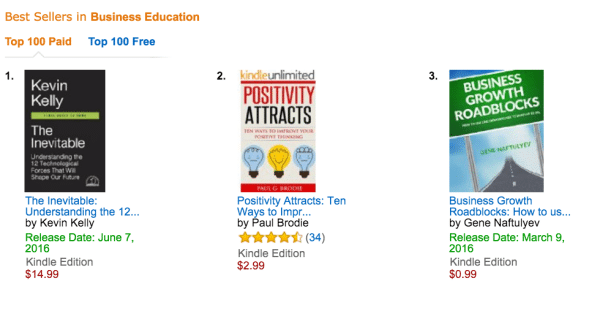
Focus on Profit
As I mentioned earlier, the focus of my work and of this series is on improving the profitability of companies while also getting them to grow bigger. I’ve come to realize that the number of people willing to teach you how to increase your sales, sometimes at the expense of profits, is much greater than the number of consultants like myself who are focused on the money you keep. So for that reason, I encourage my clients to look at the bottom-line numbers rather than top-line sales numbers.
Maybe it is because sales numbers are used to measure the performance of a company more than profits, or that sales growth is considered more important, or maybe because without sales there can be no profit – clearly, the majority of focus is on sales. But consider this: even for companies that are growing rapidly and showing losses, the reason people invest in them is not because they want to lose money. They invest because of the future profit potential. Sure short-term investors may want to dump the stock on its way up before profits are realized, but the ultimate end game for all companies is their ability to generate profits, not just revenue.
For the small business, profits are what allow the owner to enjoy the fruit of their labor without having to sell the business. Let’s explore a real-world example: Would you rather own a company that did $7.5mm in sales with profits of $520k or one that did $5.5mm with profits of $1.25mm? Oh, and in case you are wondering, it’s the same company, and the lower sales year followed the higher sales year. What changed? In the second year, the company managed to optimize profitability – thus, the owner was able to both enjoy increased profits and reinvest the money for the next year. Now, imagine once sales are grown back to $7.5mm level, with all the efficiencies in place, what kind of profit would be generated? Something in the $2mm range is likely.
So how do you ensure that your company is both profitable and growing revenues? Well, you have to start with the product!
Whether it’s a physical, digital, or service product, the margin on the product needs to be better than 4:1. Or another way to say it is the cost of delivering the product (not including sales and marketing costs) needs to be less than 25% of the price that it will be sold for. By the way, I don’t mean 25% of retail price, I mean of the real average price you are able to sell the product – that might be the wholesale price if you rely on retailers. If your product costs more than 25%, then you are facing an uphill battle in generating profit with it.
Of course, even if you do keep the product cost at less than 25% of the sales price, you still have to deal with costs of sales and marketing as well as with costs of scaling. It is not unusual for every last gross profit dollar to be spent, leaving nothing for net profit. If you can find a product to sell that costs 10% of the sale price, then you are hedging your bet against the costs associated with sales.
So before you pick or develop a product to sell, do a reality check to figure out what your gross profit on it could be, and don’t be afraid to decide that selling something doesn’t make financial sense.
Next, I want to discuss the top line number and how it relates to the bottom line number.
Focus on Sales
Profits allow you to reinvest money in the company, have a nice lifestyle, and possibly take time off – but without sales, there can be no profit. This is probably why the majority of business consulting literature is focused on improving sales. I have to admit as well that sales needs to be the first measure of a business. I even subtitled my book to reflect a ceiling at a sales figure of $5mm, not as a profit of $500k. So let’s talk about sales for just a moment.
When expenses were low, and the business was just starting out, sales and profits were much closer together. Ok, sometimes profit may have been a negative number, but even then, it was probably closer to the sales number than the profit is today. So can you increase sales without increasing expenses? Can you get the numbers to be closer again? To some extent, you can. In fact, the preferred method of increasing profit is to hold expenses relatively steady while increasing sales. This both grows the business and increases profit. This is the first path I recommend to increased profits. I’m happy to leave the actual details of how to grow sales to people much better qualified than me to answer such questions.
However, sometimes it is not possible to ramp up sales, perhaps due to lack of funds needed, or a shrinking market, or some other reason. In that scenario, it is often still possible to improve profits through reductions in operating expenses.
If you can’t grow sales, let’s see if we can keep the same level of sales while reducing some of the costs of the business. This can be done by reviewing supplier and vendor contracts and renegotiating them to more favorable terms. It may be a reduction of overall staff size by eliminating positions that do not require a full-time person, given the volume of sales. It may be by moving the office to a cheaper location or shrinking the office by having more staff working from home. The last one is usually very popular with employees because it saves them commute time while also saving the company rent and overhead money. Changing vendors, such as credit card processors or ad agencies, is another good way to use competition to reduce spending and improve profitability. Using these methods, I increased profits by over 65% for a client who, at the same time, saw a sales decrease of 35%. Not bad if you are facing shrinking sales. You might as well be sure you keep more of your money than you did before.
Sometimes, no matter the savings achieved, decreases in sales will take away everything you have managed to save. So for that reason, I explain to clients that what we are doing is akin to changing tires on a moving car. If we could stop the car, we could make the tire change go much faster, but I have yet to meet a company willing to shut down for 6 months and have no sales at all while it is being retooled to grow larger. While the car is moving, changing tires means taking fewer risks on the road or, in your case, taking fewer risks with customers. It also means that, at least for a little while, the company is going to have to pay for several sets of tires, not just the ones on the car right now. This is why it is doubly important to try and increase sales while changes to the operating environment of the company are being made. The extra revenues will be used for temporary costs during this change period, after which profit should start to increase substantially.
So to summarize, don’t neglect sales while spending time and money retooling the company operations. You need one to support the other during the process, and when the company is ready for growth to the next level, you will be poised to grow very rapidly.
Focus on Growth
In a bonus chapter I discuss the different kinds of business models that your business may be right now. This series assumes that you want to grow the business from about $5mm to $20mm or more, and so there will be a focus on growth moving forward. This means that while the efficiency of the company can be improved by removing the roadblocks that are discussed, to really grow to the next level means reinvesting much of the profits back into the business. To get to the next level, a new type of employee – an expert – will need to be hired. Up to this point, the business could have been grown without any experts other than the founders.
Moving forward, experts will be needed, as well as contractors and outsourced roles discussed in previous posts. The process of retooling a company for growth will also incur some one-off costs. Standardized process and procedure creation, for instance, takes a considerable amount of time and may require specialized positions like a project manager, which may not have existed before. In the end, these expenses will allow the company to grow well beyond the current size, and efficiencies will kick in increasing profit potential, but I want to be very clear that if growth is the goal, then prepare for an increase in costs and a deferred payout to the stockholders. A company focused on growth can not at the same time be a lifestyle business with an ever-increasing profit ready for the owner to pull out of the business.
Excerpted From The Original
Business Growth Roadblocks: How to use uncommon sense to surpass $5 mil
 It’s not always the sales side that is the problem, quite often it is the operations that are keeping a company from growing, but majority of books only address the sales side. This book looks at the most common problems in company operations and how to fix them. The book is written primarily to address companies of $3-5mil with 8-20 employees who seem to have slowed down the growth, and it illustrates how others have grown past that size by changing back end operation.
It’s not always the sales side that is the problem, quite often it is the operations that are keeping a company from growing, but majority of books only address the sales side. This book looks at the most common problems in company operations and how to fix them. The book is written primarily to address companies of $3-5mil with 8-20 employees who seem to have slowed down the growth, and it illustrates how others have grown past that size by changing back end operation.
View on Amazon

- Is your company’s technology falling behind? A 10 minute primer. - October 30, 2024
- Business Lines Of Credit: To Use Or Not To Use? - October 18, 2024
- Is Your Bank Really Working for Your Business? - August 12, 2024
